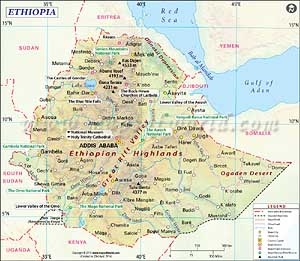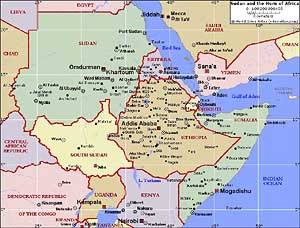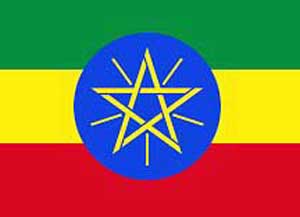-
- Ethiopia Map
|
-
- Map
of the Horn of Africa
|
|
-
|
- latest picture:
December 9, 2015
|
|
-
-
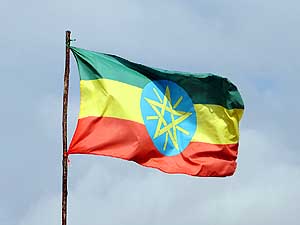
|
-
-
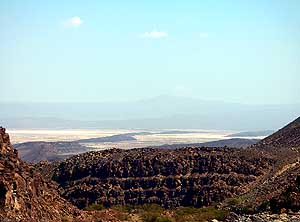
|
-
-
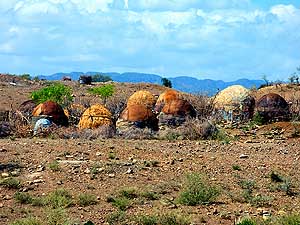
|
-
100
Ethiopia’s flag. The country has an
- own calendar, 7 years and 9 months behind
- the rest of the world – an own time (6 hours
- delayed; 12am = sunrise, noon = sunset) –
- an own script (syllabic writing, related to the
- Armenian script) and 80 languages but
- Amharic being the only official one
|
-
101
Ethiopians landscape, bordering
- Djibouti and Eritrea, is a plain
covered
- with crusts of salt, called Afar Triangle,
- which is part of East African’s 3’700 miles
- [6’000km] long “Great Rift Valley”
|
-
102
Huts of the Afar people who live
- predominantly in Ethiopia but also in
- Eritrea and
Djibouti. When nomads
- move in search of new pasture, they
- pack up their huts and transport
- them on the backs of their camels
|
-
|
-
-
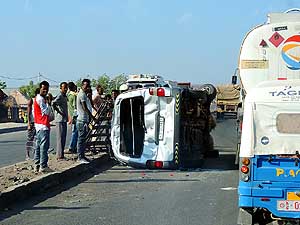
|
-
-
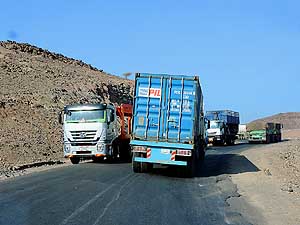
|
-
-
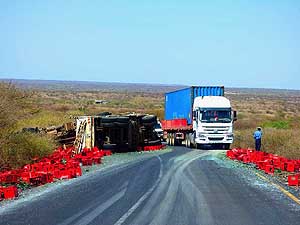
|
-
103
The enormous truck traffic through
- the Danakil Desert between Djibouti
- and Ethiopia ends catastrophically
- for many driver …..
|
-
104
….. driving in a never-ending line of trucks
- on bumpy, potholed and broken-off tarred
- roads that have extreme deep grooves (6 inches
- [15cm]), requires a permanent concentration
|
-
105
A policeman watches a turned
- over Coca Cola truck on the
- “Djibouti truck road”
|
-
|
-
-

|
-
-

|
-
-
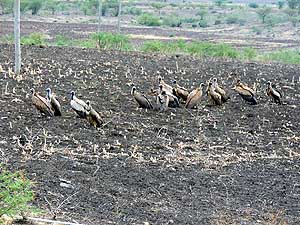
|
-
106
A nostalgic sight: A tiny camel
- caravan moves through the Ethiopian
- stony Danakil Desert
|
-
107
We stop to give a leopard tortoise
- (Stigmochelys pardalis) the right-of-way to
- cross the road. They can live 80 to 100 years
|
-
108
A group of griffon vultures
- (Gyps fulvus) is waiting for a road kill.
- They scavenge on dead animals
|
-
|
-
-
-
-
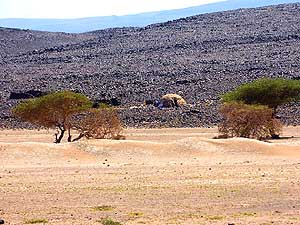
|
-
-
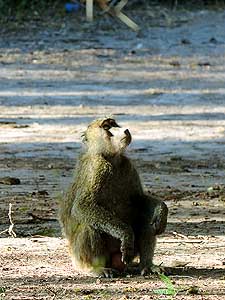
|
-
-
-
-
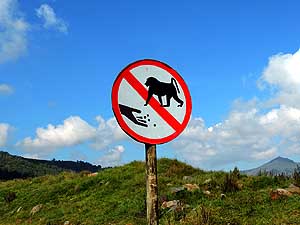
|
-
109
An Afar hut at the edge of the
- Danakil stone desert
|
-
110
A yellow baboon (Papio cynocephalus)
- looks up to a fellow on the tree. Baboons are
- social creatures. They use much time grooming
|
-
111
A sign reminds not to feed baboons.
- Baboons live in groups of 5 to 250 animals.
- They sleep on trees and cliffs
|
-
|
-
-
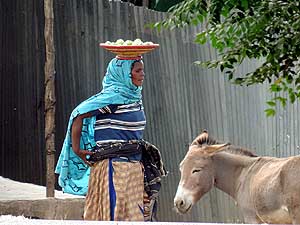
|
-
-
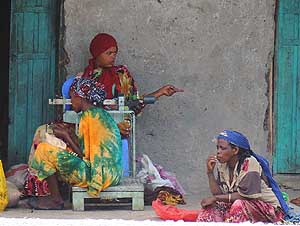
|
-
-
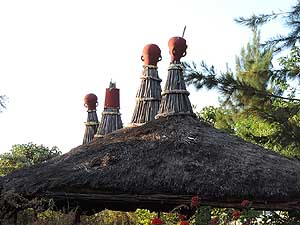
|
-
112
Inseparable! A woman and her
- indispensable donkey
|
-
113
A scene in front of a house:
- Women are seen mainly in groups.
- They live mostly outdoors
|
-
114
A peculiarity on thatched huts in the
- Asbe Teferi region: Spires are adorned
- with upside down clay pots
|
-
|
-
-
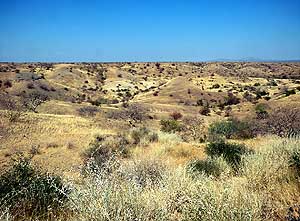
|
-
-
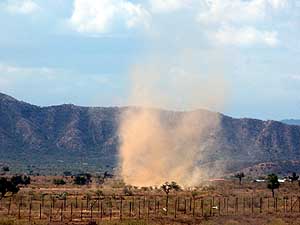
|
-
-
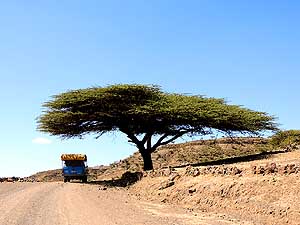
|
-
115
Already shortly after the end of the rainy
- season, the landscape is completely dried out –
- but 2016 is an exceptional drought year
|
-
116
In the arid plain a land spout
- has formed and raises skywards
|
-
117
During the hot season, the shade
- providing branches of an acacia are a blessing
- – here on the road from Weldiya to Lalibela
|
-
|
-
-
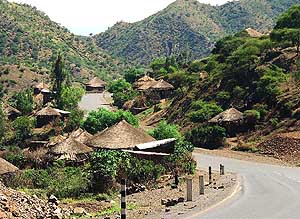
|
-
-
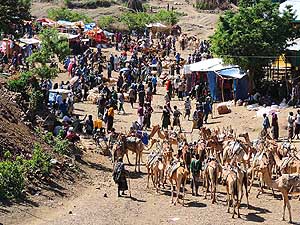
|
-
-

|
-
118
A thatched village near Kilawa on the
- new mountain road from Mille via Chifra to
- Weldiya that climbs up to 6’230 ft. [1’900m]
|
-
119
In Kilenti, a mountain village between
- Mille and Weldiya, a market is in full swing.
- Camels wait to be loaded
|
-
120
Side by side: Traditional thatched houses
- and a modern mosque between Mille and
- Weldiya, about 15 min. north of Kilenti
|
-
|
-
-
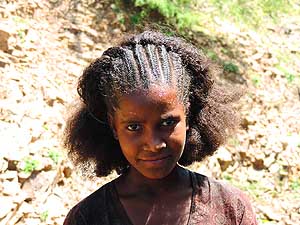
|
-
-
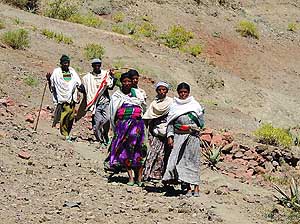
|
-
-
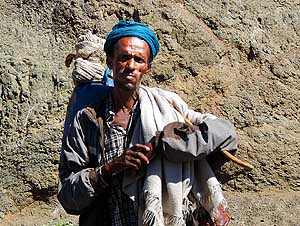
|
-
121
Does this girl of the Amhara tribe
- not look innocently into our camera?
|
-
122
Mountain people between Gashena
- and Lalibela descend from their village to
- the street to catch a mean of transport
|
-
123
A stick and a shoulder scarf are
- part of the outfit of a mountain dweller
|
-
|
-
-
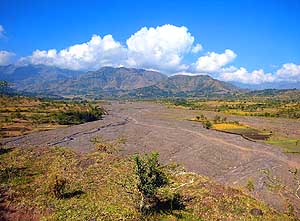
|
-
-
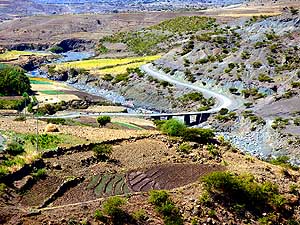
|
-
-
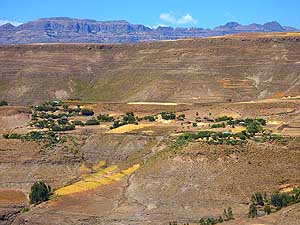
|
- The road from Weldiya to Lalibela through the highlands reveals
diverse scenery:
|
-
124
The River Awira west of Weldiya on
- the “Chinese Road” to Bahir Dar and Gondar
- runs towards the Danakil Depression
|
-
125
Tributary of the Tekeze River, which flows
- to the Eritrea border and later into Sudan – here
- along the road from Dilbe (27 miles [43km]
- west of Weldiya) via Kulmesk to Lalibela
|
-
126
Thatched huts and bright yellow
- wheat fields come into view, also on the
- road from Dilbe (27 miles [43km] west
- of Weldiya) via Kulmesk to Lalibela
|
-
|
-
-
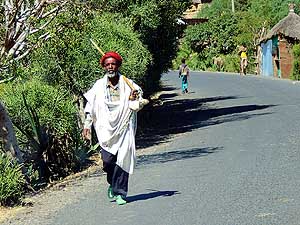
|
-
-
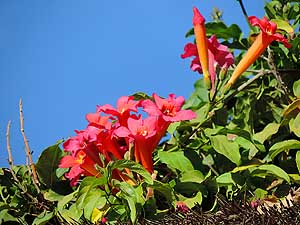
|
-
-
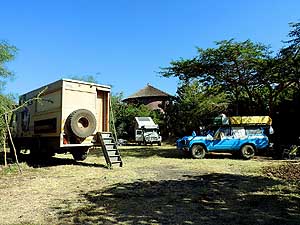
|
-
127
In Lalibela a man is walking along
- the street, draped in white cotton
|
-
128
At the Tukul Village Hotel in Lalibela
- it even flowers on a thatched roof:
- Climbing Honeysuckle (Lonicera)
|
-
129
Other overlanders show up at the
- Tukul Village Camping: The Dutch Els
- and Peter with their Mercedes 1222 truck
- and Anne and Stan from South Africa
- with their LandCruiser HZJ76
|
-
|
-
-
-
-
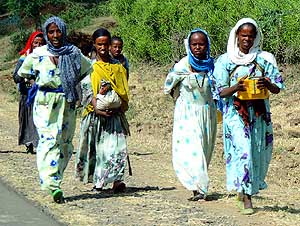
|
-
-
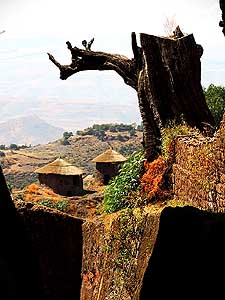
|
-
-
-
-
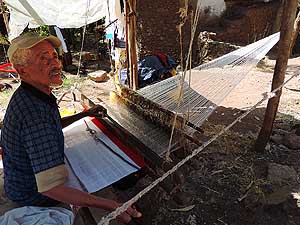
|
-
130
Ladies in their Sunday outfit are
- on their way to church. Often they
- have a long way to go
|
-
131
The huts in Lalibela are simple, but
- setting and views are fabulous. View from
- the northwestern group of churches
|
-
132
A man in Lalibela weaves a
- traditional cotton scarf on his loom
|
-
|
-
-
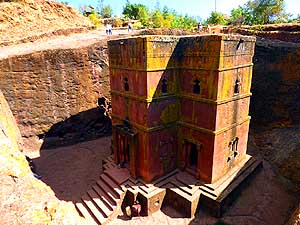
|
-
-
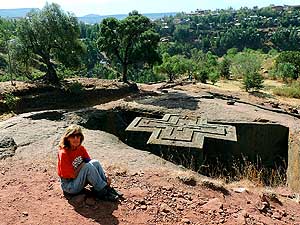
|
-
-
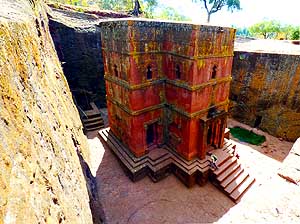
|
- An about 1000 years old architectural wonder and UNESCO World
Heritage Site are the rock-hewn churches of Lalibela. The “Bet
Giyorgis”
- church (Saint George’s church) with its roof at ground level built
in the shape of a Greek cross is optically the masterpiece of the 11
churches
|
-
133
The Saint George’s church was carved
- top-down from a single rock (as did the other
- churches) and then hollowed out on the inside
|
-
134
Liliana enjoys the view of the cross
- formed, ground-leveled roof of
- Saint George’s church
|
-
135
To reach the entrance of the church,
- one has to descend 50 ft. [15m]
- from ground level
|
-
|
-
-
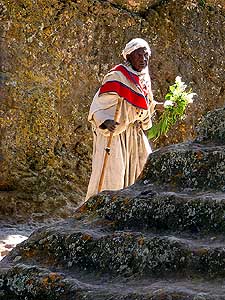
|
-
-
-
-
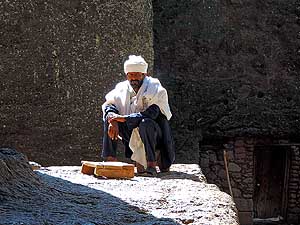
|
-
-
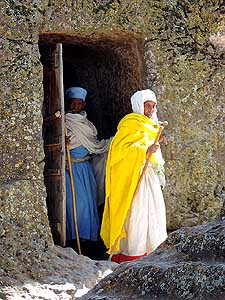
|
-
136
A worshipper enters the Saint
- George’s rock-hewn church to pray
|
-
137
A visitor sits in the sunshine sneaking
- through the stone walls of the church.
- At 8'000 ft. [2’630m] altitude it gets chilly
|
-
138
Lalibela worshippers enter through
- the doorways carved in the rock to the
- rock-hewn churches
|
-
|
-
-
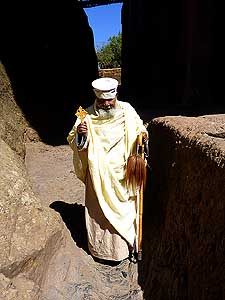
|
-
-
-
-
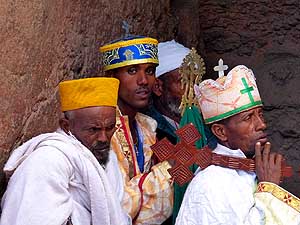
|
-
-
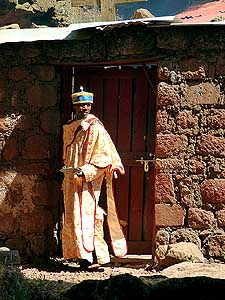
|
-
139
A priest with his golden cross in
- one hand and an aspergillum in the
- other walks to the pilgrims
|
-
140
Priests are on the way to the pilgrims
- with their distinctive crosses to bless them
|
-
141
Wrapped in his beautiful religious
- regalia a priest steps out of a wooden door
|
-
|
-
-
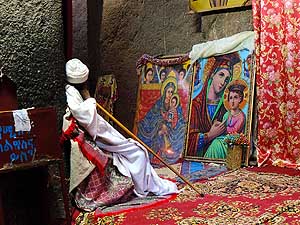
|
-
-
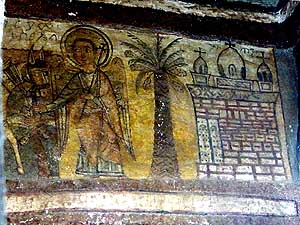
|
-
-
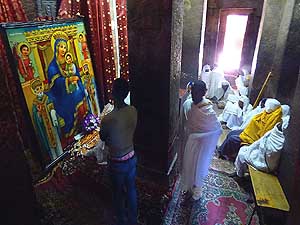
|
-
142
At “Bet Medhane Alem” church a
- monk is snoozing in front of saint images.
- With its 110 ft. by 77 ft. and 38 ft. height
- [33. 5 x 23.5m x 11.5m], it is said to be the
- largest rock-hewn church in the world
|
-
143
Wall painting of a saint at
- “Bet Medhane Alem” rock
- church in Lalibela
|
-
144
Inside the church, white-robed
- pilgrims are waiting to get the blessing of
- a priest (“Bet Medhane Alem” church)
|
-
|
-
-

|
-
-
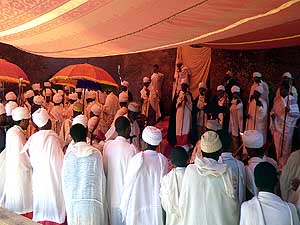
|
-
-
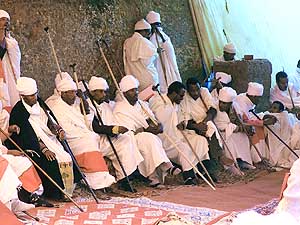
|
-
145
In the “Bet Maryam” church in
- Lalibela, the most popular church among
- pilgrims, a religious festival in honor
- of Saint Mary is celebrated …..
|
-
146
….. monks and priests gather under a
- red canopy. Men with sticks, performing a
- dance, are standing face-to-face in two
- rows. While chanting, they are moving two
- steps forward, two steps backward …..
|
-
147
….. then they relax on a bench
|
-
|
-
-
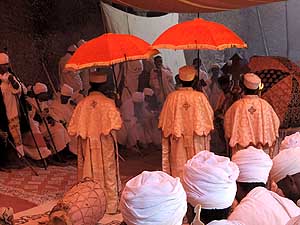
|
-
-
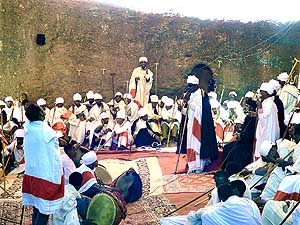
|
-
-
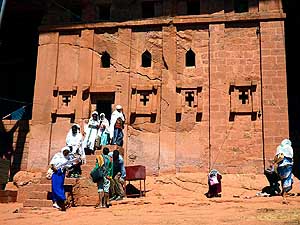
|
-
148
In the center of the celebration are
- priests under umbrellas. The umbrella is said
- to signify the presence of the Holy Spirit in
- the Ethiopian Orthodox Church …..
|
-
149
….. the religious celebrations end
- with a long lasting singsong of a priest
|
-
150
Worshippers step out of the
- “Bet Abba Libanos” rock-hewn church
- of Lalibela’s southeastern group
|
-
|
-
-
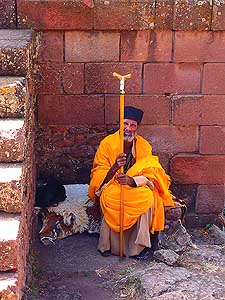
|
-
-
-
-
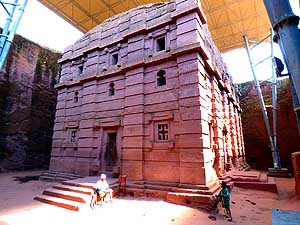
|
-
-
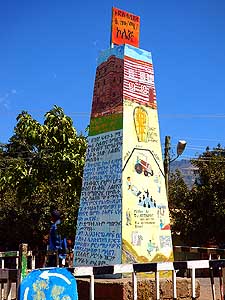
|
-
151
A priest is putting aside a religious
- text he was just reading and watches
- the tourists passing by
|
-
152
The obtrusive but obviously necessary
- roofing of most of Lalibela’s rock-hewn
- churches (except „Bet Giyorgis“ -
- Saint George’s) – here it’s “Bet Amanuel“–
- diminishes considerably its original charm
|
-
153
A small obelisk, decorated with
- different motifs all around, marks the
- town center of Lalibela
|
-
|
-
-
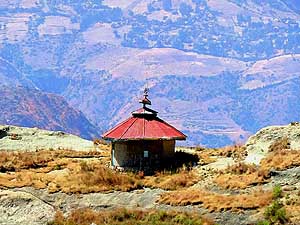
|
-
-
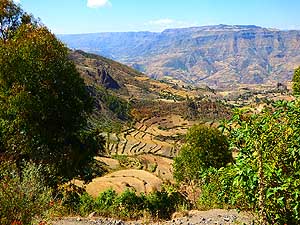
|
-
-

|
-
154
Continuing our journey on the
- „Chinese Road“, a tin-roofed memorial in
- the shape of a round hut sits lonely in the
- countryside between Lalibela and Gondar
|
-
155
Terraced mountain slopes belong
- to the scenery of the highlands on
- the “Chinese Road”
|
-
156
Between Debre Tabor and Gondar
- an imposing monolith is rising from the
- fertile plain around Lake Tana
|
-
|
-
-
-
-
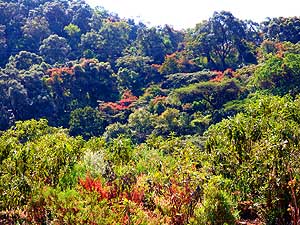
|
-
-
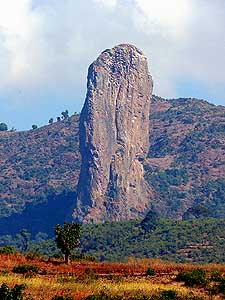
|
-
-
-
-
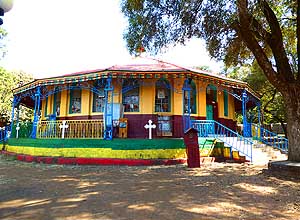
|
-
157
Flowering red bushes are refreshing
- red spots in the green foliage of the forest
|
-
158
The “Devils Nose Rock”, a basaltic
- rock finger about >150 ft. [>50m] tall,
- approx. 2½ miles [4km] northwest of
- Addis Zemen along the road to Gondar
|
-
159
The “Gemjabet Maryam” church
- in Gondar belongs to the “Royal Enclosure”,
- also called “Fasil Ghebbi”
|
-
|
-
-
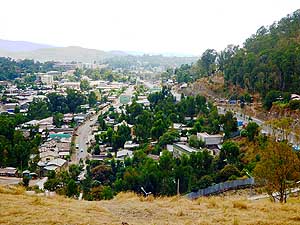
|
-
-
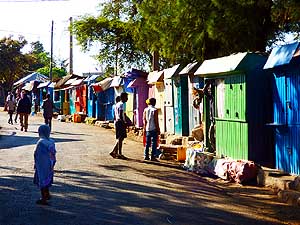
|
-
-
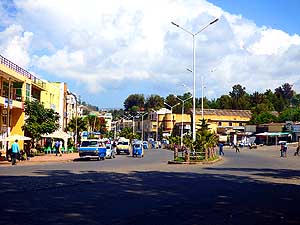
|
-
160
View from the hill of the Goha Hotel
- over the city of Gondar, once
- capital of Ethiopia
|
-
161
Street with stalls near “Ras Gimb/
- Ras Gemp”, where Emperor Haile Selassie I
- spent his summer holidays and his successor,
- dictator Mengistu Haile Mariam, installed in
- 1974 a torture prison
|
-
162
The Italian-built plaza with its shops
- and restaurants marks Gondar’s modern
- city center and serves also as square for
- gatherings, demonstrations and festivals
|
-
|
-
-
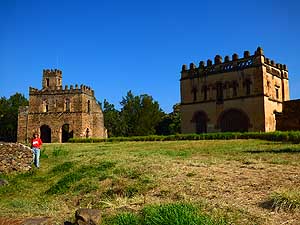
|
-
-
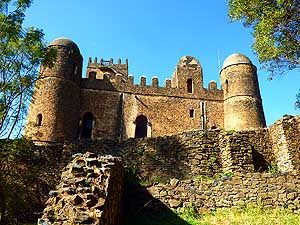
|
-
-
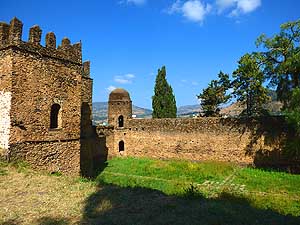
|
- The “Royal Enclosure” (Fasil Ghebbi) of Gondar is a UNESCO World
Heritage Site, which spreads over 17.3 acres [70’000m²]
- and contains an impressive palace district of about eight
buildings and three churches
|
-
163
The Fasilada’s archive (left)
- and the library of Fasilada’s son
- Yohannes I (right)
|
-
164
The Fasilada Castle is the oldest and
- most impressive of the six castles. It is 105 ft.
- [32m] high and has four domed towers
|
-
165
Part of the Banqueting Hall and
- part of the wall with view to the city
|
-
|
-
-
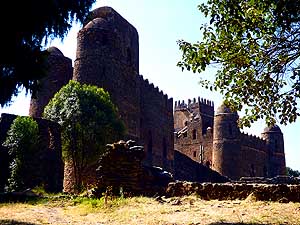
|
-
-
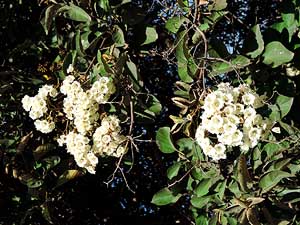
|
-
-
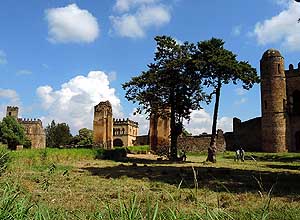
|
-
166
Palace of Iyasu I, son of Yohannes I
- (left) next to the Fasilada Palace
|
-
167
The flowering viburnum scrub
- (Viburnum) inside the “Royal Enclosure”
- spreads a delicate scent
|
-
168
The palaces in the “Royal Enclosure”
- date from different imperial eras and were
- founded in the 17th and 18th century
|
-
|
-
-
-
-
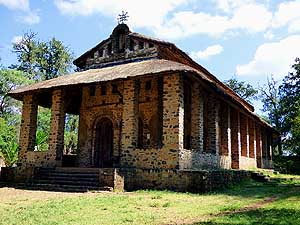
|
-
-
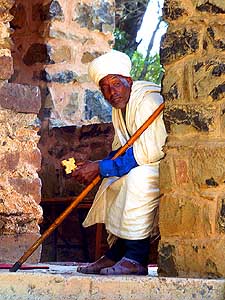
|
-
-
-
-
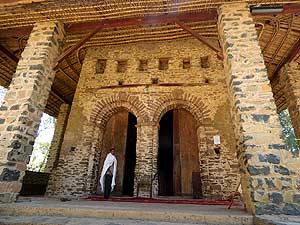
|
- The “Debre Berhan Selassie” church in Gondar, dating from the 17th
century, is considered to be one of the most beautiful
- Ethiopian churches. Legend has it that it has been spared from
demolition by Sudanese invaders (marauding dervishes) by a
- huge swarm of bees that attacked and chased them away
|
-
169
“Debre Berhan Selassie“ stone
- church in the east of Gondar
|
-
170
A priest waits with his golden
- cross for worshippers to bless them
|
-
171
Entrance for men to the interior of
- the “Debre Berhan Selassie” church.
- Women have to use the side door
|
-
|
-
-
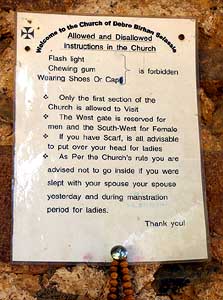
|
-
-
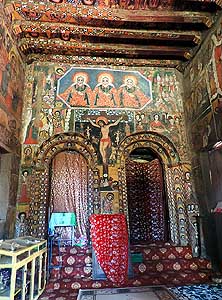
|
-
-
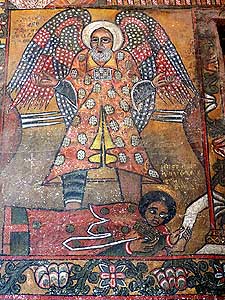
|
-
172
To the church rules belong that
- admission for men is not allowed if they
- slept the day before with their spouse and
- that ladies cannot enter during menstruation
|
-
173
The main altar depicts Jesus’
- crucifixion and the Holy Trinity
|
-
174
One of the impressive biblical
- scenes that cover each inch
- of the church walls
|
-
|
-
-
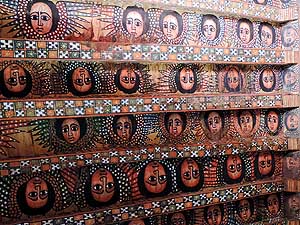
|
-
-
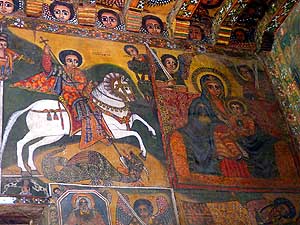
|
-
-

|
-
175
The ceiling is decorated with
- hundreds of angel faces …..
|
-
176
177
-
- ….. and the walls show more outstanding mural paintings
|
-
|
-
-
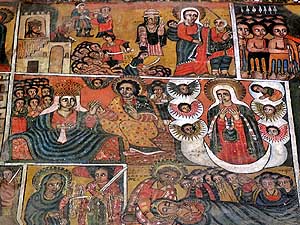
|
-
-
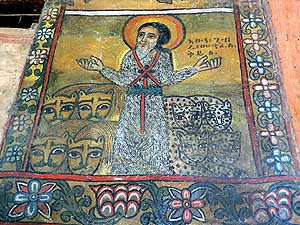
|
-
-
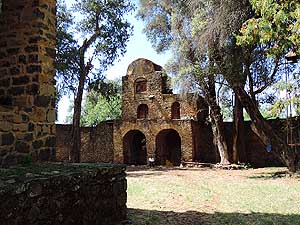
|
-
178
179
-
- The wall paintings are a beautiful example of Ethiopian church art
|
-
180
The 13th tower and entrance
- gate of the “Debre Berhan Selassie”
- church in Gondar
|
-
|
-
-
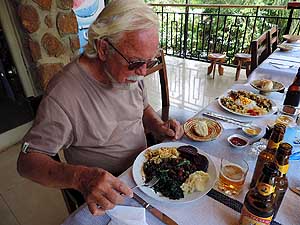
|
-
-
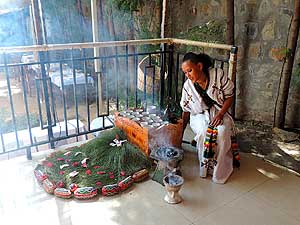
|
-
-
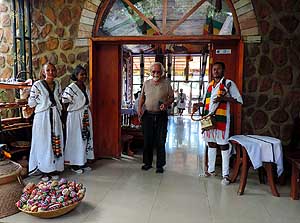
|
-
181
Emil’s mouth is watering when
- his menu is served at the “Four Sisters”
- Restaurant in Gondar
|
-
182
Coffee ceremony at “Four Sisters”
- Restaurant: Coffee drinking is ceremonial
- in Ethiopia even in the tiniest of villages
- and places. Beans are roasted, crushed,
- brewed and served in tiny cups
|
-
183
According to the motto “The customer
- is king”, the waitresses bow goodbye to Emil
- at the “Four Sisters” Restaurant in Gondar –
- a lovely finish of our Ethiopia journey –
- now it’s time for Sudan!
|
-
|
- Back to the 1st part of the Ethiopian trip:
Ethiopia Part
1
– October
25th to November 18th, 2015, from Kenya to
Djibouti
- Continuation to the Sudan trip:
Sudan –
December 9th, 2015 to January 8th, 2016, from Ethiopia to
Saudi Arabia
|
-
- The "Greater"-Middle East trip 2012/13:
- Sharjah/Dubai/1st Traveler's Festival/Emirates
National Auto Museum - UAE with
car Nov. 2012 to Jan. 2013 - part 1
- Western UAE - Liwa - United Arab Emirates with car in January 2013 - part 2
- Oman 2013 – Part 1 - February
2013: Musandam Peninsula
- Oman 2013 – Part 2 - February
2013: Sohar - Muscat - Rustaq - Nizwa
- Oman 2013 – Part 3 - March
2013: Sur - East Coast - Island of Masirah - Dhofar
- Oman 2013 – Part 4 - March
2013: Salalah & Surroundings (Dhofar) - Nizwa
- Oman 2013 – Part 5 - March 2013: Western Hajar
Mountains
- Al Ain, Eastcoast & Ras al Khaima - United
Arab Emirates with our car in April 2013 -
part 3
- Iran - part 1: Ferry Port Bandar Abbas-Shiraz-Persepolis-Pasargad (between Persepolis and Yazd)
– May 2013
- Iran - part 2: Pasargad
(excl.)-Yazd-Esfahan – May 2013
- Iran - part 3: Esfahan
(excl.)-Chelgerd-Hamadan-Sanandaj-Orumiyeh – May 2013
- Turkey - Esendere-Hakkari-Van-Dogubayazit-Kars-Ardahan-Hopa-Georgia
Border – May/June 2013
- Georgia - part
1: Ajaria-Gori-Tbilisi-Kakheti-Azerbaijan
Border – June 2013
- Azerbaijan: Georgia Border-Balakən-Şəki-Lahıç-Baku-Xınalıq-Quba-Laza-Baku-Gəncə-Georgia Border – June 2013
-
Georgia - Part 2a: Azerbaijan Border-Tbilisi-Armenia
Border –
June/July 2013
- Armenia part 1 – July 2 to 9, 2013: Georgia Border - Akhtala - Haghpat
- Dilijan - Lake Sevan - Selim - Arates - Nagorno-Karabakh
- Nagorno-Karabakh:
Armenia-Stepanakert-Gandzasar-Martakert-Tigranakert-Tnjri-Shoushi-Armenia – July
- Armenia -
Part 2:
Nagorno-Karabakh-Goris-Tatev-Noravank-Khor Virap-Echmiadzin-Yerewan-Geghard-Gyumri-Georgia Border – July 2013
- Georgia -
Part 2b: Armenia Border-Ninotsminda-Tbilisi-Mtskheta-Kazbegi-Kutaisi-Zugdidi –
July 2013
- Georgia -
Part 3a:
Zugdidi-Swaneti-Zugdidi-Abkhazia Border – July/August 2013
- Abkhazia: Georgia-Sukhumi-Tsebelda-Novyy Aton-Lake
Ritsa-Gagra-Pitsunda-Georgia – August
2013
- Georgia - Part 3b: Abkhazia Border-Poti-Ferry to Ilyichevsk/Ukraine
– August 2013
|
-
|
![]()
